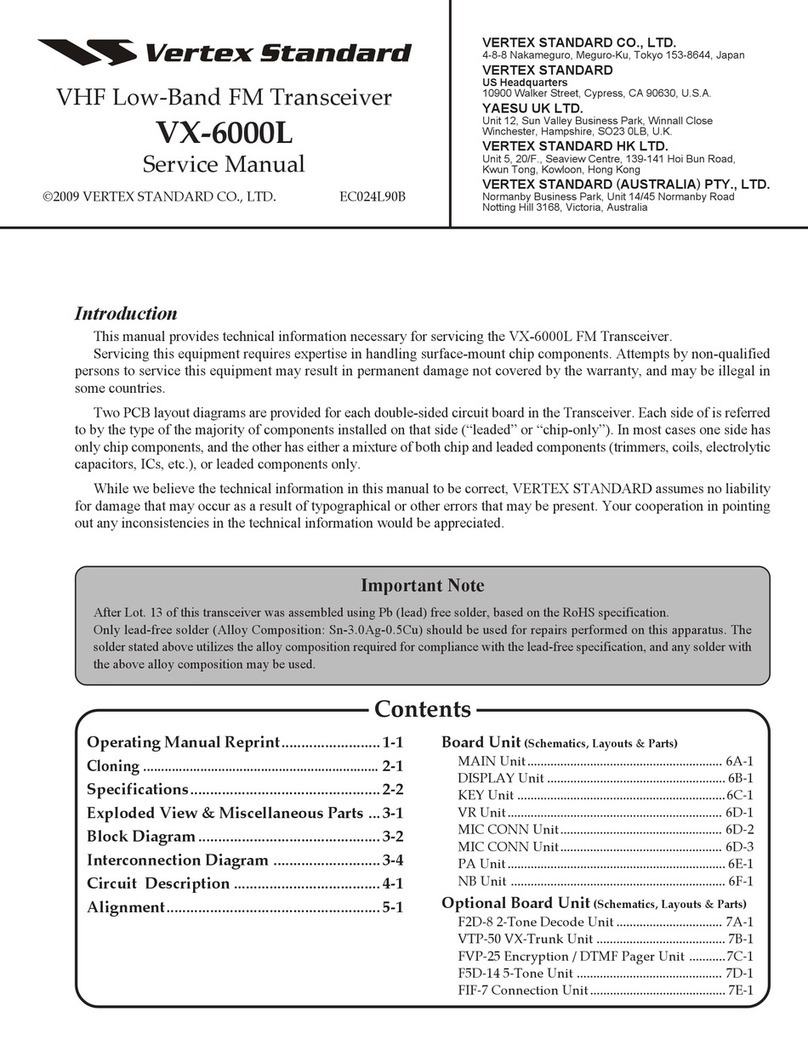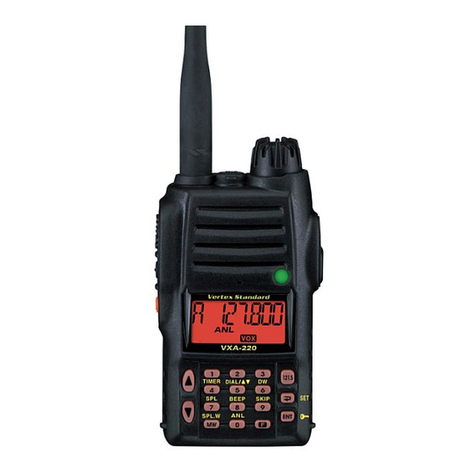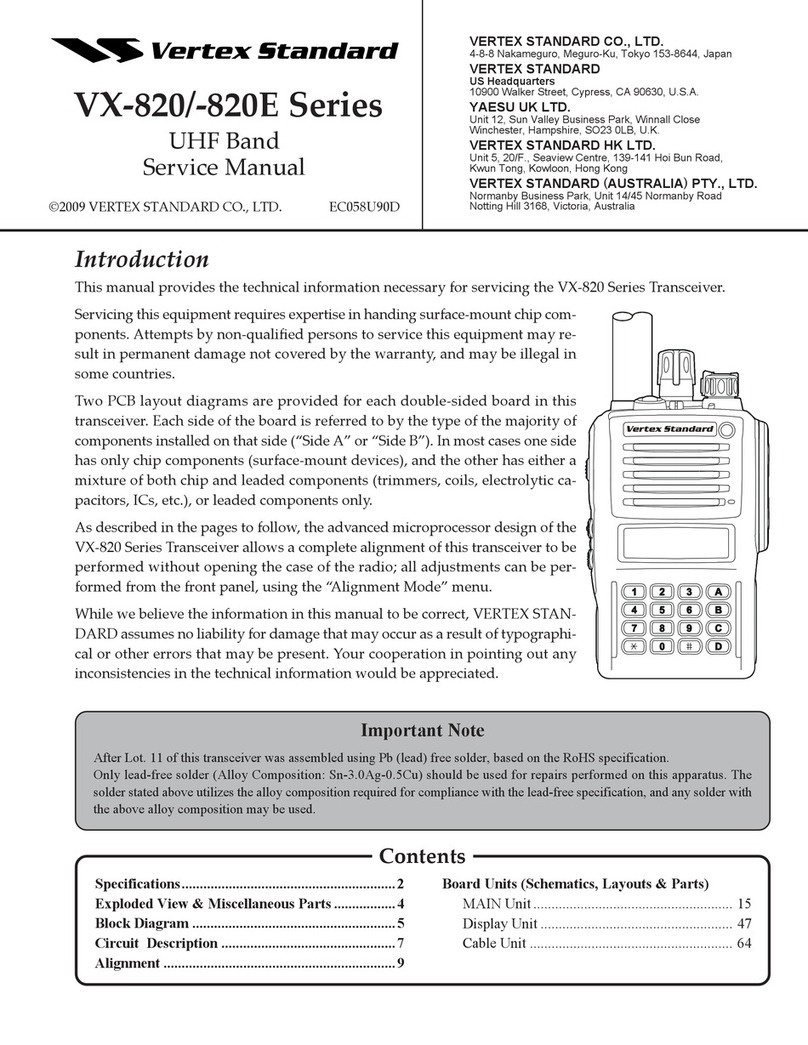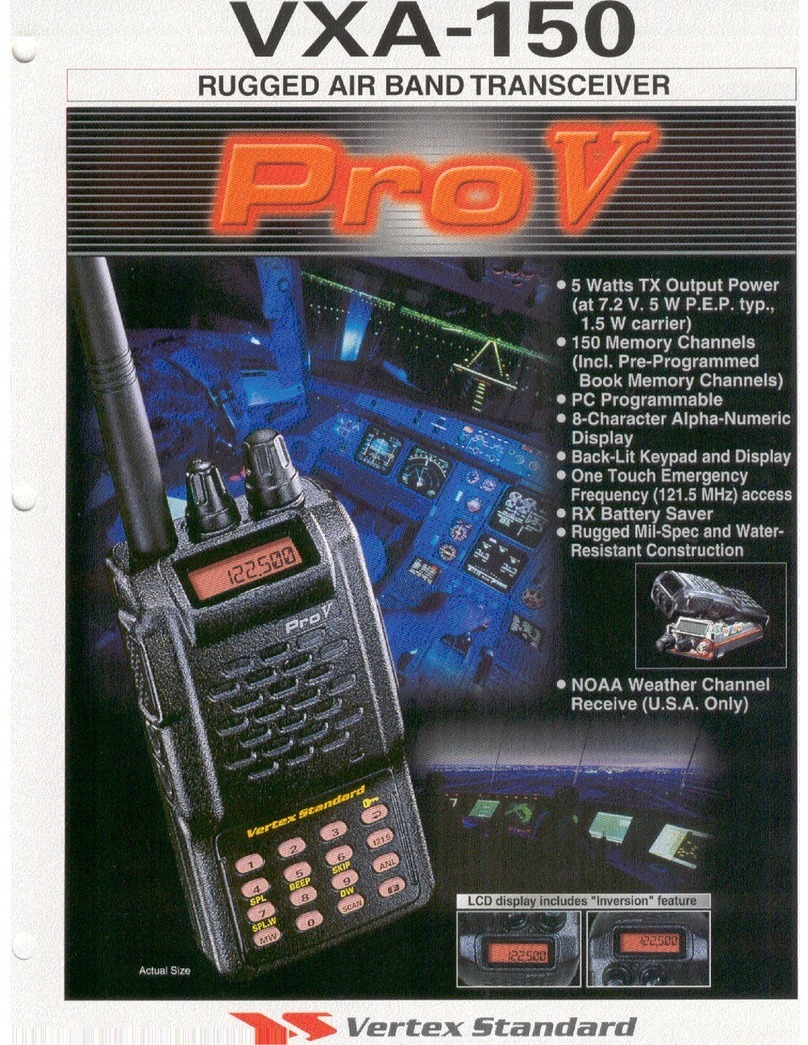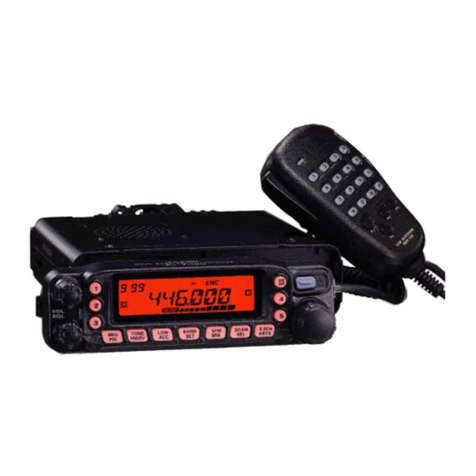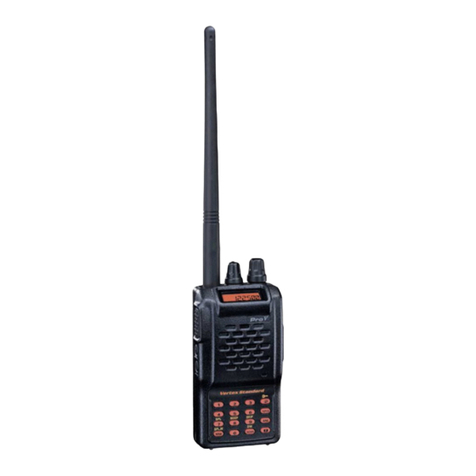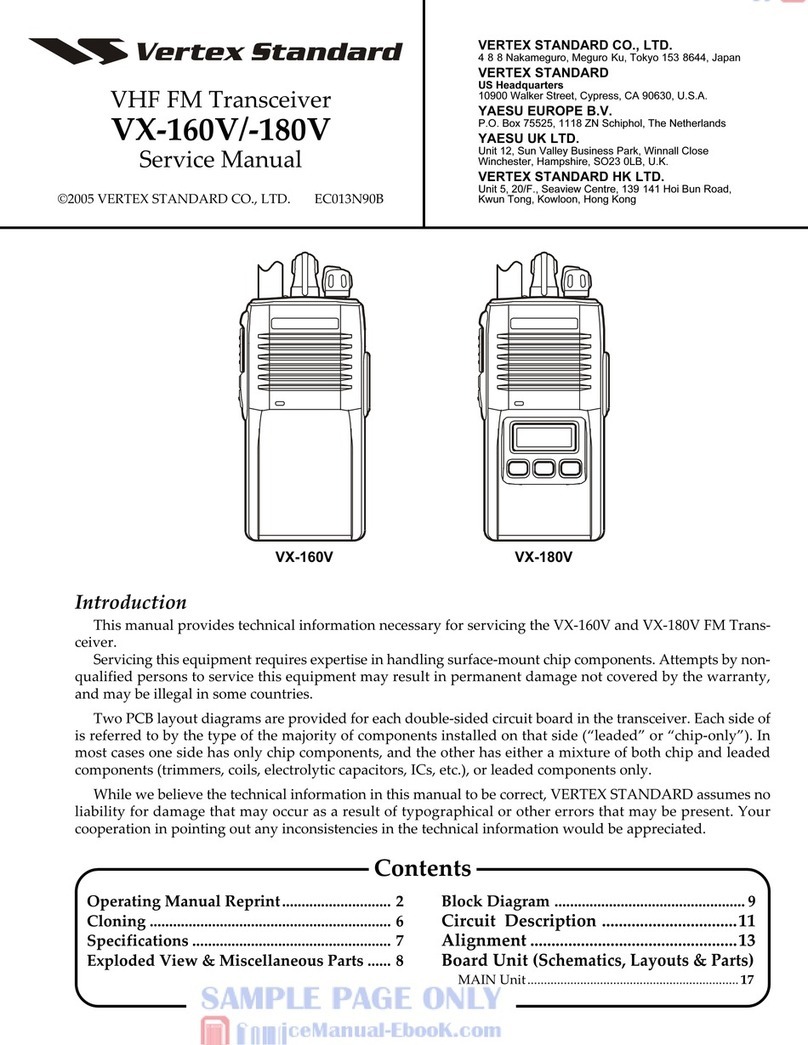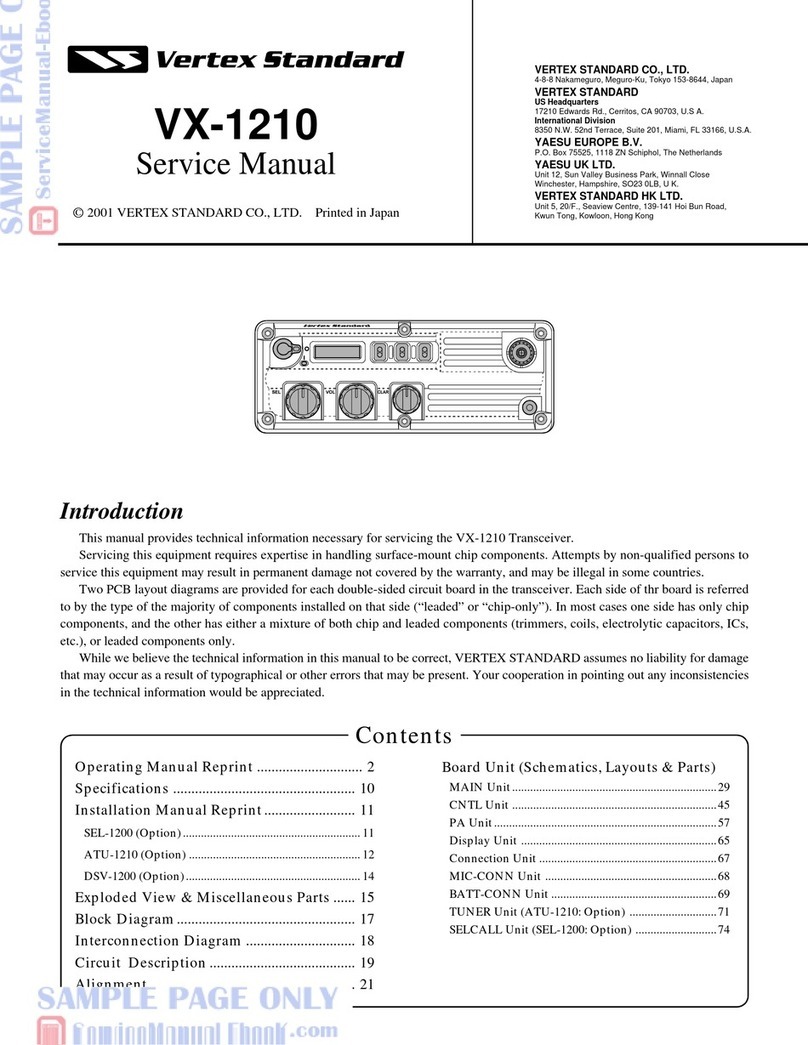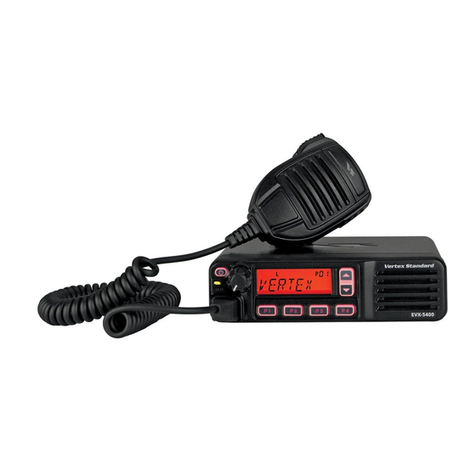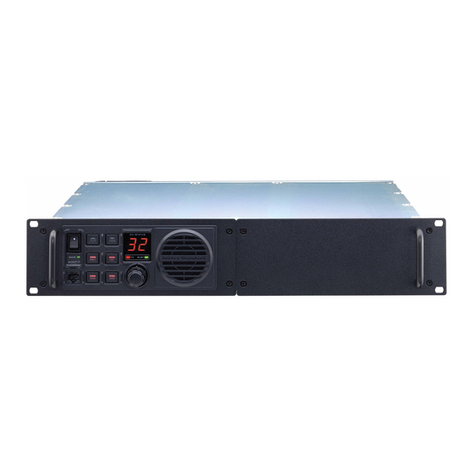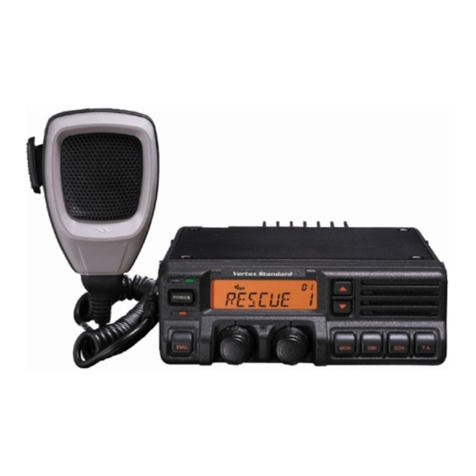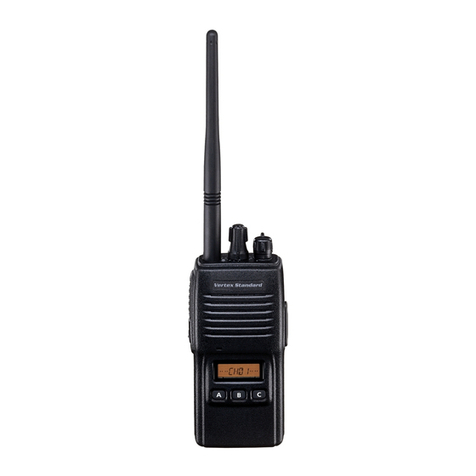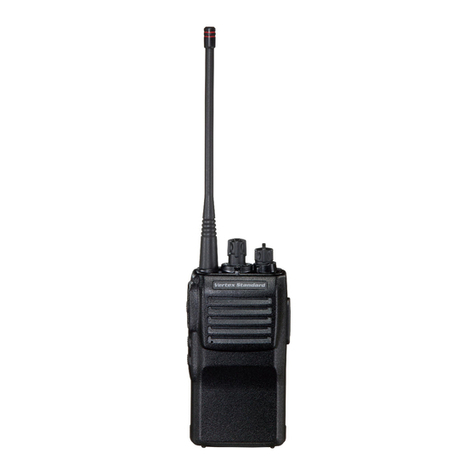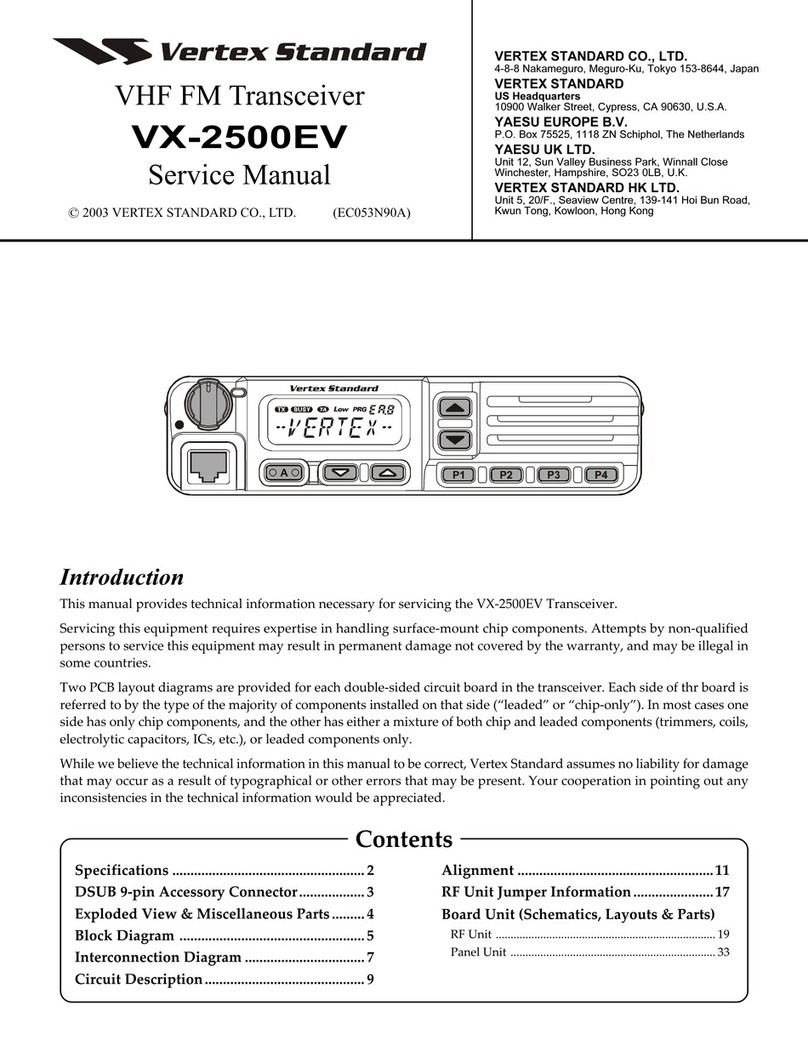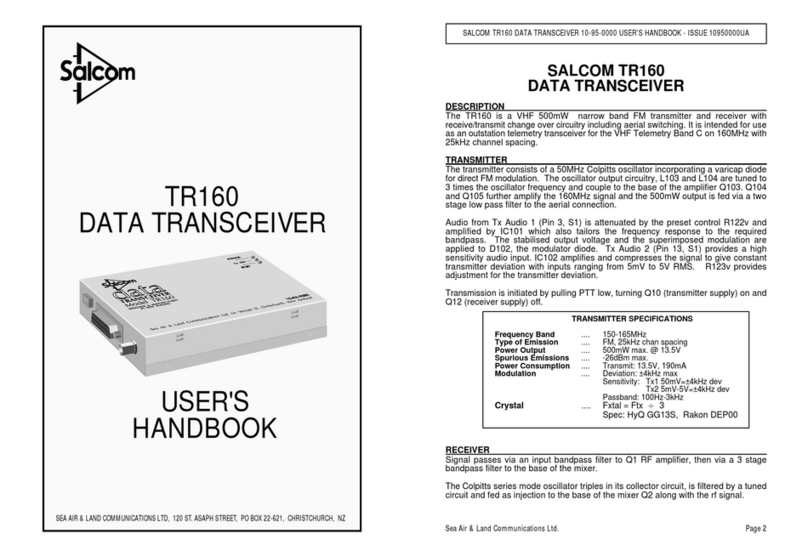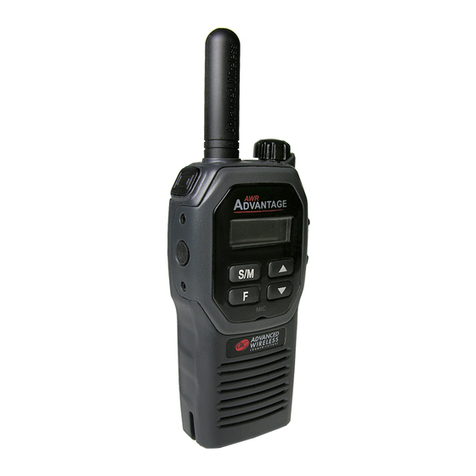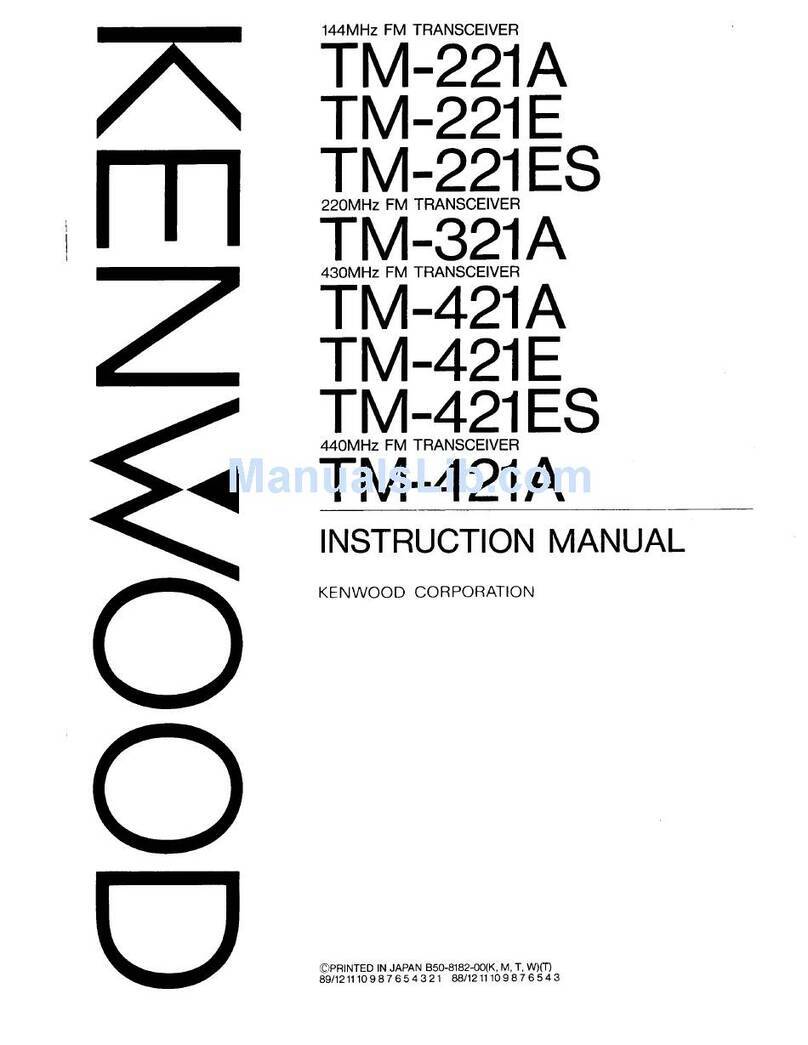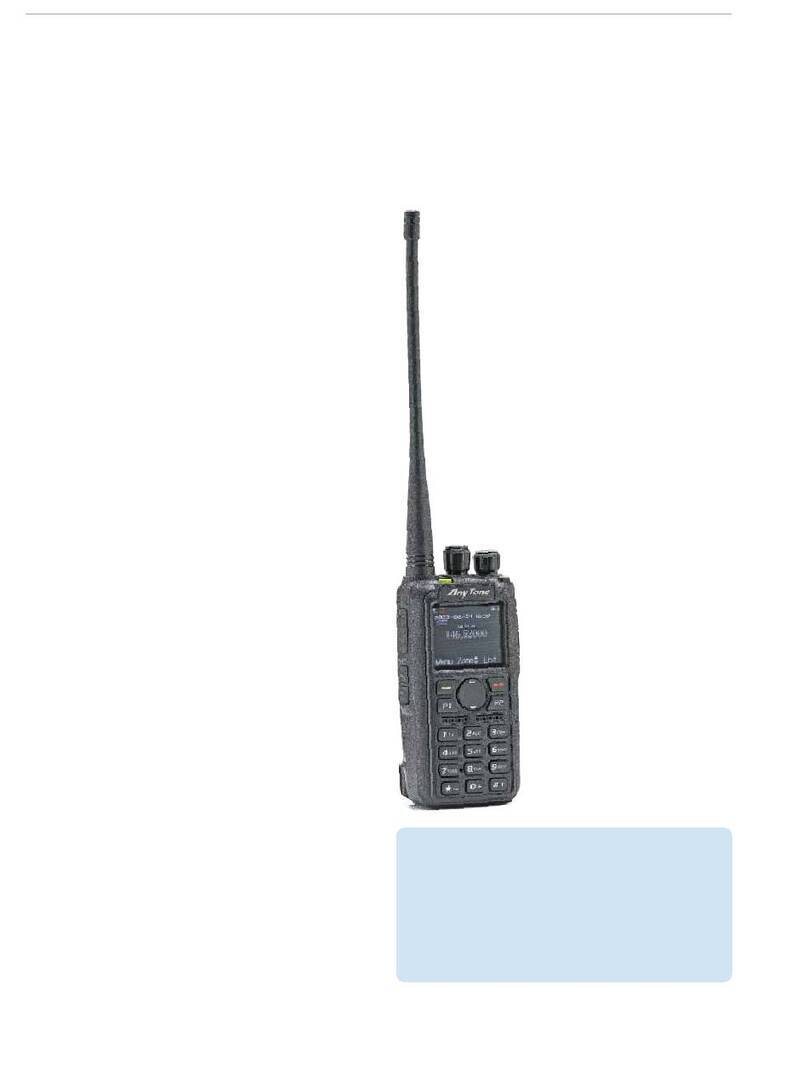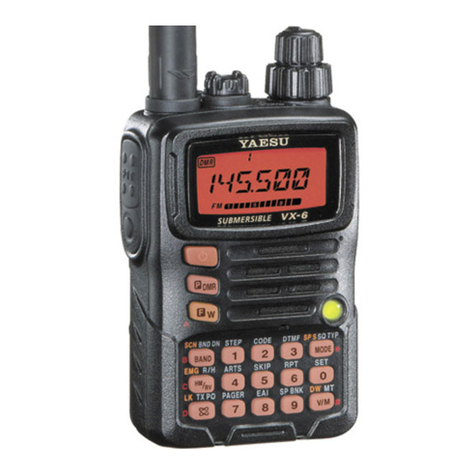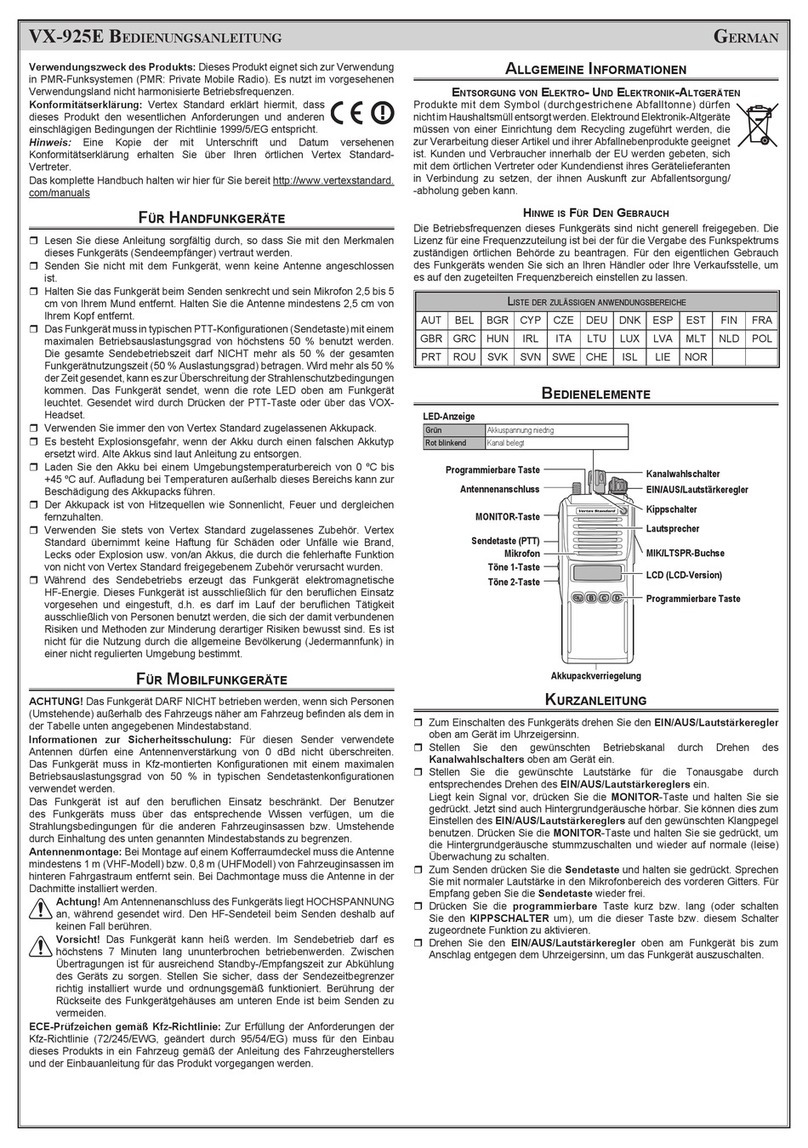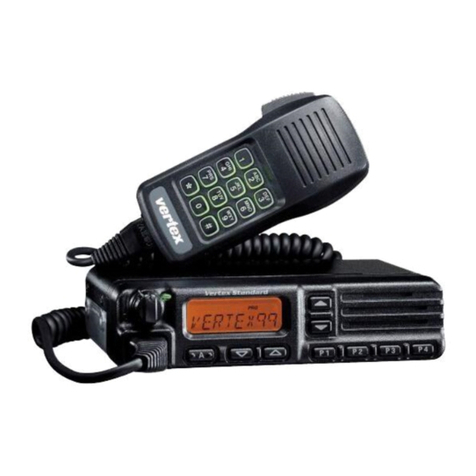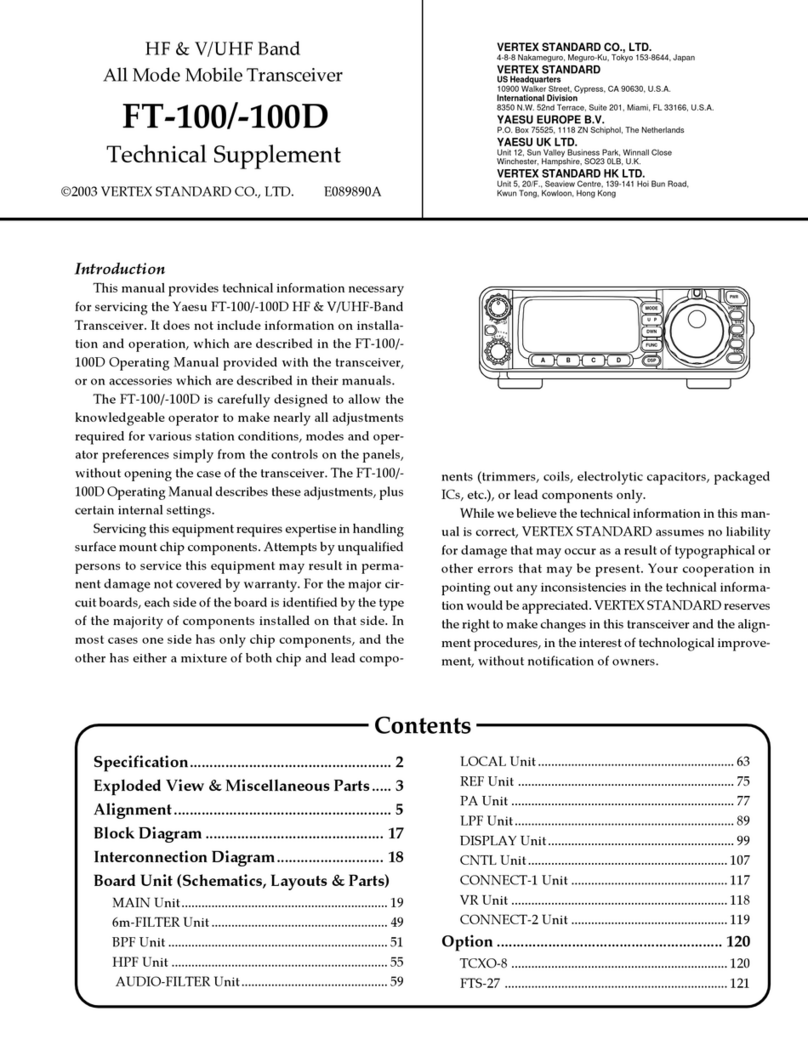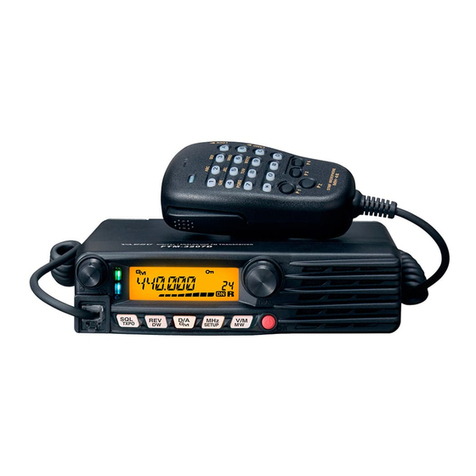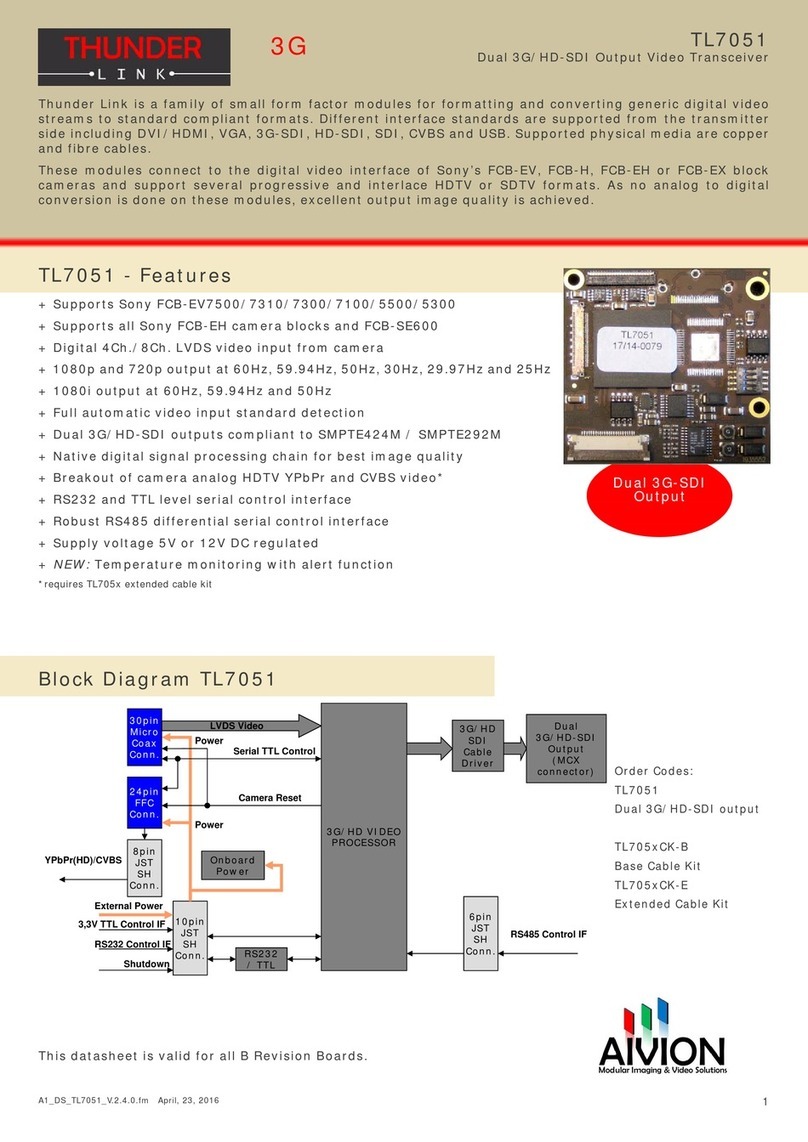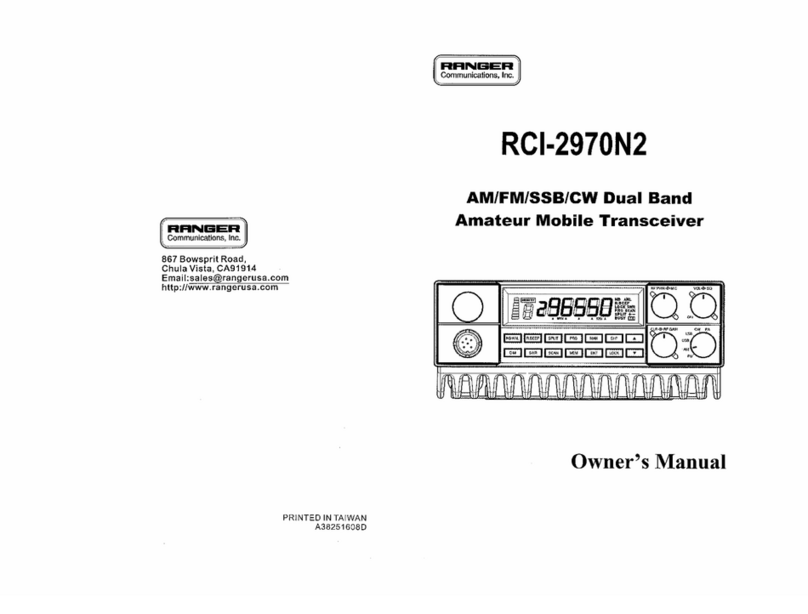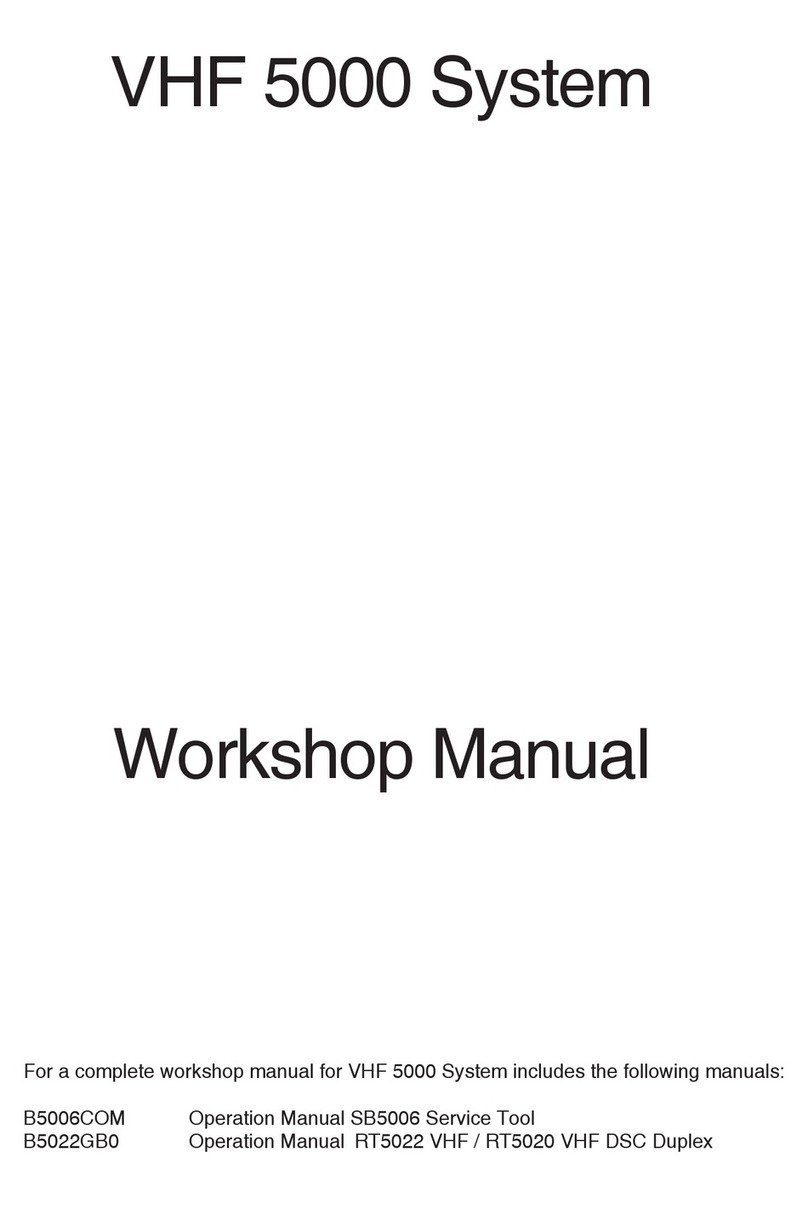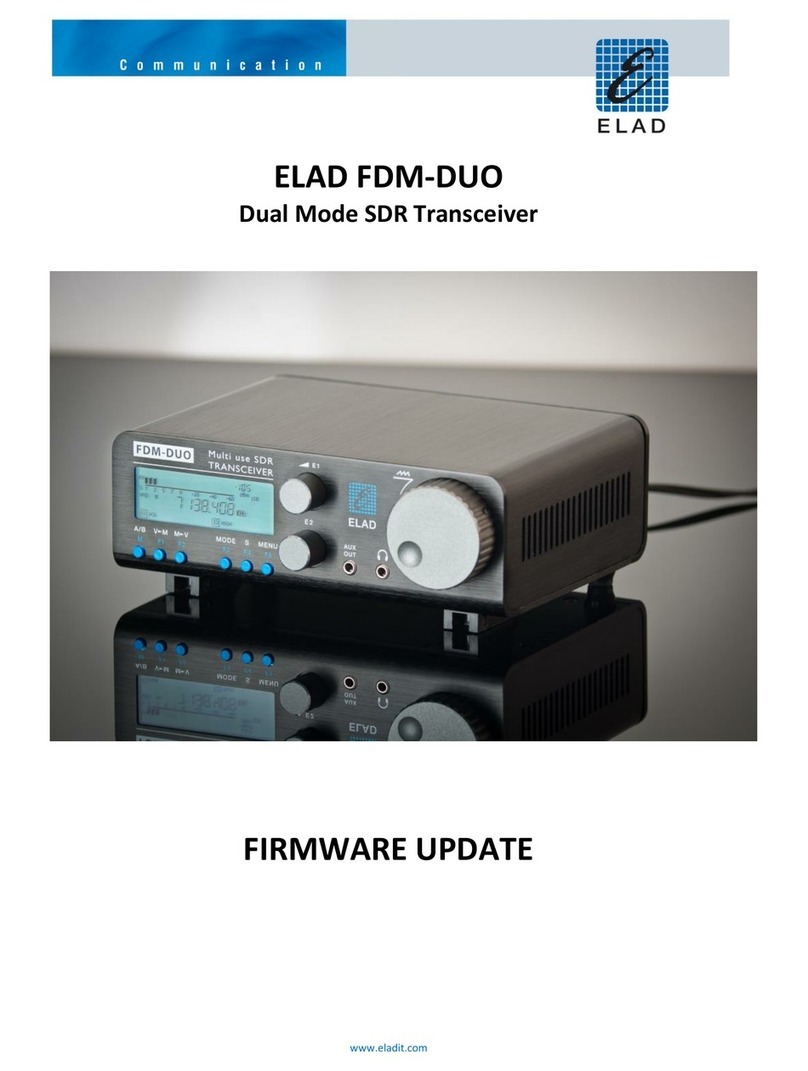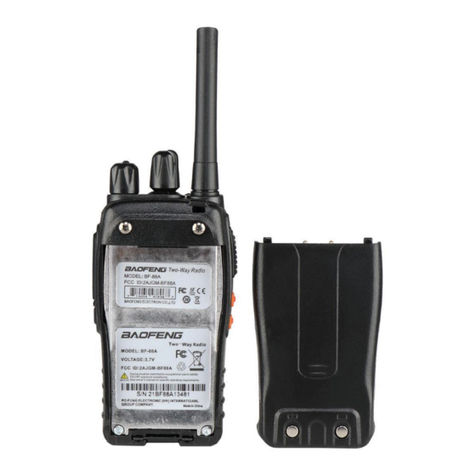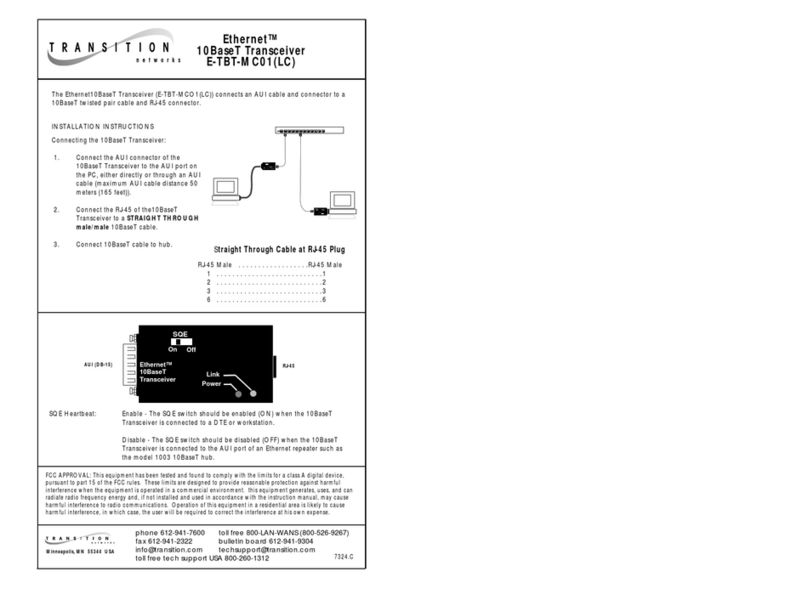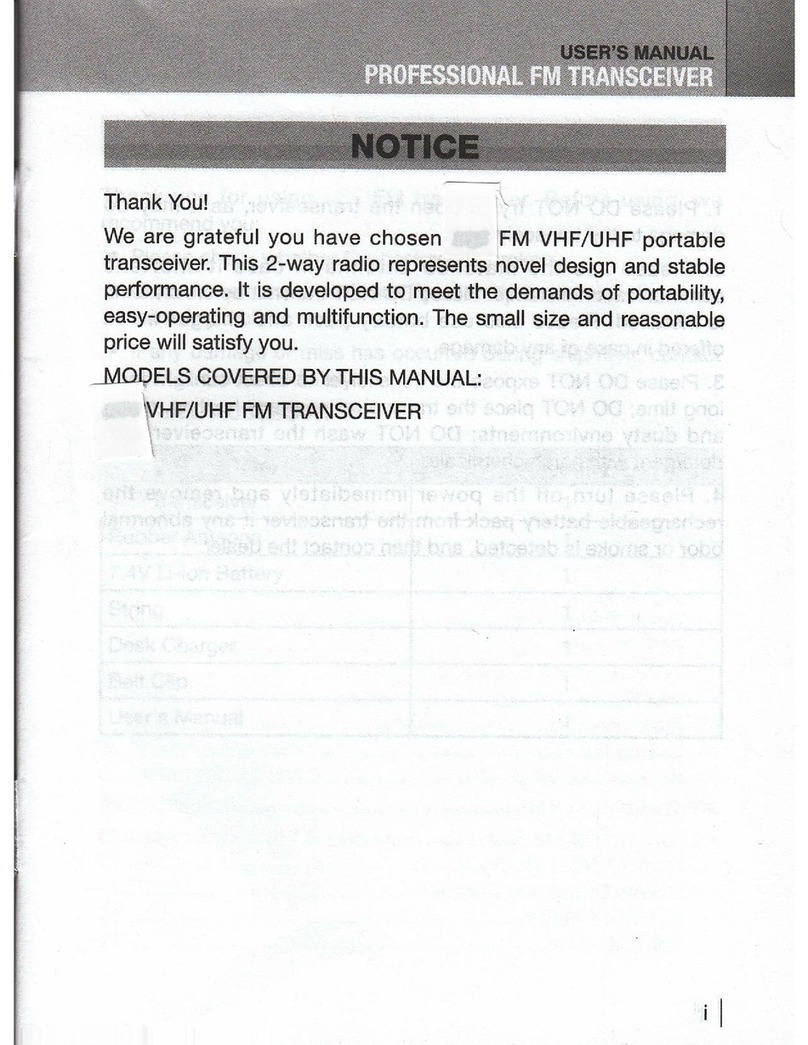
1. Circuit Configuration by Frequency
The receiver is a double-conversion superheterodyne with a
first intermediate frequency (IF) of 67.65 MHz and a second IF of
450kHz. The incoming signal from the antenna is mixed with the
local signal from the VCO/PLL to produce the first IF of 50.85MHz.
This is then mixed with the 67.2 MHz second local oscillator
output to produce the 450 kHz second IF. This is detected to
give the demodulated signal.The transmit signal frequencyis
generated by the PLL VCO and modulated by the signal from the
microphone. It is then amplified and sent to the antenna.
2. Receiver System
2-1. Front-end RF amplifier
The incoming RF signal from the antenna is delivered to the RF
Unit and passes through the Low-pass filter which removes
undesired frequencies by use of varactor diodes, tuned band-
pass filter consisting of diodes D1003 (1SV323), D1004
(1SV323), D1005 (1SV323), D1006 (1SV323) and Coils L1006
and L1009, capacitors C1013, C1016, C1033, and C1039, C1041,
C1044.
The passed signal is amplified in Q1007 (2SC3356) and more-
over cuts an image frequency with the band pass filter consist-
ing of Coils L1011, L1013 and L1014, L1015 and capacitors C1003
C1011,C1012,C1016andC1022, C1023, C1027and C1028, C1334,
C1141 and comes into the 1st mixer.
2-2. First Mixer
The 1st mixer consists of the Q1025 (3SK293). Buffered
outputfrom the VCO is amplified by Q1023 (2SC5226) to pro-
vide a purefirst local signal between 201.65 and 241.65 MHz for
injection to the first mixer. The output IF signal is entersfrom the
mixer to the crystal filter. The IF signal then passesthrough mono-
lithic crystal filters XF1001 (±5.5 kHz BW) to strip away all but
the desired signal.
2-3. IFAmplifier
The first IF signal is amplified by Q1033 (2SC5226). The
amplifiedfirst IF signal is applied to FM IF subsystem IC Q1036
(NJM2591) which contains the second mixer second local os-
cillator limiter amplifier noise amplifier and S-meter amplifier. The
signal from the refernce oscillator is tripled by Q1033 (2SC5226),
it is mixed with the IF signal and becomes 450 kHz. The second
IF then passes through the ceramic filter CF1001 (for wide chan-
nels) CF1002 (for narrow channels) to strip away unwanted mixer
products which removes amplitude variations in the 450 kHz IF
before detection of the speech by the ceramicdiscriminator
CD1001.
2-4. Audio amplifier
Detected signal from Q1036 (NJM2591V) is inputted to Q1042
(LM2902PW) and is output through the band pass filter inside
Q1042 (LM2902PW). When the optional unit is installed
Q1044 (SN74LV4066APW) is turned "OFF" and the AF sig-
Circuit Description
nal from Q1042 (LM2902PW) goes the optional unit. When
the optional unit is not installed, Q1042 (LM2902PW) is turned
"ON" and the signal goes through Q1004 (SN74LV4053APM).
The signal then goes through AF mute switch Q1044
(SN74LV4066APW) de-emphasis part Q1042 (LM2902PW).
amplified with AF power amplifier Q1003 (TDA1519CTH) after
passing AF volume Q1014 (M62364FP). The output of Q1003
(TDA1519CTH) drives a speaker (either the internal or external
speaker).
2-5. Squelch Circuit
There are 13 levels of squelch setting from 0 to 12. The level 0
means open the squelch. The level 1 means the threshold set-
ting level and level 11 means tight squelch. From 2 to 10 is estab-
lished in the middle of threshold and tight. The bigger figure is
nearer the tight setting. The level 12 becomes setting of carrier
squelch.
2-5-1. Noise Squelch
The noise squelch circuit is composed of the band pass filter of
Q1036 (NJM2591V) noise amplifier Q1047 (LM2902PW) and
noise detector D1047, D1048 (both MC2850). When a carrier
isn`t received, the noise ingredient which goes out of the de-
modulator Q1036 (NJM2591V) is amplified in Q1047
(LM2902PW) through the band pass filter Q1036 (NJM2951V)
is detected to DC voltage with D1047, D1048 (both MC2850)
and is inputted to 15 pin (the A/D port) of the Q1065 (CPU:
LC87F5CC8A). When a carrier is received the DC voltage be-
comes "LOW" because the noise is compressed. When the de-
tected voltage to CPU is "HIGH," the CPU stops AF output with
Q1044 (SN74LV4053) "OFF" by making pin 80 low. When the
detection voltage is low the CPU makes Q1068 "ON" making pin
80 "H" enabling AF output.
2-5-2. Carrier Squelch
The Pin 14 (A/D port) of Q1065 (CPU: LC87F5CC8A) detects
RSSI voltage output from pin 12 of Q1036 (NJM2591V), and
controls AF output. The RSSI output voltage changes accord-
ing to the signal strength of carrier. The stronger signal makes
the RSSI voltage higher. The process of the AF signal control is
the same as Noise Squelch. The shipping data is adjusted 3dB
higher than squelch tight sensitivity.
3. Transmitter System
3-1. Mic Amplifier
There are two micrphone inputs, J1004 (front) and J1006 (D-
Sub). Each microphone inputs has it's own amplifier. Which
micrphone is selected is controlled by the CPU and in addition,
the amplified AF signal is selected with Flat-AF selection switch
Q1043 (LM2902PW). Mic Gain is adjusted with Mic gain VR
Q1014 (M62364PF) through HPF-AMP Q1043 (LM2902PW),
and Pre Enphasis and Mic Mute Q1044 (SN74LV4066) are
passed at FLAT-AF OFF. And, the option use is selected with
E-1




















